- Home
- Alison Weir
The Lost Tudor Princess Page 22
The Lost Tudor Princess Read online
Page 22
Bishop was a hostile witness and may well have exaggerated, or even fabricated, his evidence. Yet there was widespread interest among the Elizabethan aristocracy in astrology, palmistry and other occult practices, so Margaret’s preoccupations were not unusual for her time, although the assertion that she resorted to witches may have been an invention. Even so, it was dangerous for her to dabble in such things, especially as the government was becoming increasingly concerned that supernatural practices might be used to undermine the state.
Margaret could also have been prosecuted for hearing Mass, which was now illegal. From June 1559, Catholics who failed to attend Anglican services were fined, but there is no record of that penalty being imposed on Margaret, which suggests that she, or Lennox, as head of the household, conformed outwardly, although evidently the government remained suspicious.
Being of royal blood, Margaret was infinitely more of a threat to the state than most Catholic wives, and the government knew that she was the dominant force in the Lennox marriage. She could also count on considerable local support. In March 1559 the Venetian ambassador reported that, although the Queen’s Protestant subjects were increasing in number, “they are not so powerful as the Catholics, who comprise the chief personages of the kingdom, with very great command in their estates, having also many followers.”26 He was almost certainly referring not only to the Lennoxes, but also to several other great lords in Yorkshire, among whom were Lord Wharton and the Earls of Northumberland and Westmorland.
Thomas Percy, 7th Earl of Northumberland, the greatest landowner and a Catholic, was like a king in the north. Henry Neville, Earl of Westmorland, has been called a “boisterous” character. In 1546–47 he had been imprisoned for plotting to murder his first wife and his father by witchcraft. Having confessed and been pardoned, he had since served as a Privy Councilor and Lieutenant of the North, but in 1558, when his second wife was found dead in bed and he immediately married her sister, causing a great scandal, outraged rumors had it that they had colluded to poison her.27 It would later be asserted that Westmorland cherished feelings for Margaret: “of all women [he] bears her his heart.”28 Strickland called it “a deep and enduring passion,”29 but that is probably what the Earl cherished for his third wife rather than Lady Lennox. He was ten years Margaret’s junior, and the most he probably felt for her was admiration and loyalty.
Sir Richard Chamberlain, the keeper of nearby Scarborough Castle, was a Lennox man and a good friend of the Earl and his wife. Likewise his successor, Sir Richard Cholmeley; Sir William Babthorpe, a local Justice of the Peace and a “misliker” of the new religion; and several others in Yorkshire.30 It has been estimated that about three-quarters of the population in the North Riding was Catholic.31 There were three priests in the Lennox household: Thomas Robertson, William of Malton and John Dixon, who also acted as Margaret’s secretary, and they and the Earl’s Catholic stewards were known to the authorities.32 The Lennoxes’ solicitor, Peter Vavasour, was described by the government as another “misliker of religion,” “a Papist of the worst sort,” and a counselor to Lennox, Margaret and Northumberland.33 John Elder was strategically placed in France, and the tutor Arthur Lallard made himself useful by translating letters written in French.34
Elizabeth’s policy toward her Catholic subjects was conciliatory—to begin with. But the Lennoxes were clearly not prepared to lie dormant. It is impossible to keep track of the many messengers and agents who worked for them, secretly disseminating information at home and abroad, furthering the preservation of the old faith, the return of Lennox’s Scottish lands, and, as time went by, the couple’s dynastic ambitions. What stands in stark contrast with all this activity is the enduring love between Margaret and her husband, which has been described as “an element of purity and gentleness in a household credited with dark political intrigues.”35
It was not long before that household was infiltrated by government agents whose presence Margaret clearly did not suspect. At least one of the Lennoxes’ servants was informing on them to Sir William Cecil, the Queen’s chief minister, and another, William Forbes, was a spy in the pay of Lord Robert Dudley, who was close to the Queen.36 Through them, Elizabeth would learn of Margaret’s animosity. Speaking later of her royal cousins, she told Sir William Maitland of Lethington (now Lennoxlove), the Scottish Secretary of State, that some “had made declaration to the world that there are more worthy of [the crown] than either she [the Queen of Scots] or I.”37 It was clear whom she meant, so it is hardly surprising that she had Margaret and Lennox kept under surveillance.
The new Queen’s councilors feared that Margaret would make a bid for the throne, supported by the might of Spain and the Catholic lords in the north. For more than two years Margaret was to have covert dealings with Alvaro de Quadra, Bishop of Aquila, the Spanish ambassador, a man with considerable diplomatic skills and social graces, who came from a family with a long tradition of service to the Spanish Crown. She “had her factors [agents] about him.”38 One, called Brinklow, was later hanged for robbery; another was Francis Yaxley.
A former protégé of Cecil and servant of Queen Mary, Yaxley had worked for the Privy Council and as a diplomat, and was now a Member of Parliament and clerk of the signet, and described as a member of the Queen’s privy chamber.39 Margaret employed him to obtain information from Quadra, and used him from time to time to send her word by a go-between, Hugh Allen, of anything that might serve her interests. Yaxley’s letters to her do not survive because she burned them.40 Hugh Allen was a Lennox agent based in London, who sent his employers messages from abroad and from two informers at court, a Scottish woman and a mysterious lady in attendance on the Queen, both of whom used Arthur Lallard as another channel of communication,41 but only by word of mouth, as none of them dared write anything down.42 Thus Margaret could keep abreast of what the Queen was saying about her.
According to Quadra, Yaxley had too great a love of intrigue and was incapable of keeping secrets—in January 1561 he would be imprisoned for having “babbled” about the Queen’s notorious affair with Lord Robert Dudley43—but he was a “good Catholic”44 who would willingly serve as an agent for Mary, Queen of Scots, later on.45 His family, whose seat, Yaxley Hall in Suffolk, still stands, was of the old faith and allied to the Howards, and its members were to appear on official lists of recusants.
Aside from the religious settlement, there was one pressing matter on the government’s agenda, and that was the Queen’s marriage. But although Elizabeth was willing to be courted by many foreign suitors, rampant gossip had already linked her name to her Master of Horse, Lord Robert Dudley, the son of the traitor Northumberland, who had been executed after Queen Mary’s accession in 1553. Their affair was soon the talk—and the scandal—of Europe, and many believed that they were lovers. Margaret was apparently ready to vilify Elizabeth and besmirch her reputation. The spy William Forbes was to report: “She loves not the Queen,” citing as proof the fact that for two years she had allowed her fool to make barbed jokes about her and never reproved him.46 But Forbes may have been lying.
—
Scotland was now in turmoil. The Queen Regent was involved in a bitter conflict with the Lords of the Congregation, horrified at the escalating violence and iconoclasm of their movement. To prevent further desecration of abbeys and churches, she sent in her French troops, an unpopular move that served only to harden Protestant resistance, which gathered momentum when the fiery and charismatic preacher John Knox, a former chaplain to Edward VI, returned from exile in May and joined the Lords of the Congregation, whipping up support for them in impassioned sermons.
On June 21, Sir Nicholas Throckmorton, Elizabeth’s ambassador in Paris, reported that the French King intended to prosecute Mary, Queen of Scots’ title to the English throne, and that Aubigny, Lennox’s brother, was hand in glove with him in those matters and had said that Queen Elizabeth “had not so much right to England as the Queen Dauphine; and if [Mary’s] title was not good there
was another nearer than the Queen.”47 He was clearly referring to Margaret. But King Henry had no opportunity to press Mary’s claim. On July 6, 1559, he died of agonizing wounds after a lance pierced his eye and throat in a tournament. Fifteen-year-old Francis II, who was plagued by skin eruptions and dizzy spells, now ascended the throne, and Mary, Queen of Scots, sixteen, six feet tall, beautiful and accomplished, became Queen of France.
At Aubigny’s invitation the Lennoxes sent the twelve-year-old Lord Darnley to the French court to congratulate the new King and Queen and to give them a letter asking for their support in securing the restoration of Lennox’s Scottish estates. The boy was received with “great distinction” by Francis and Mary.48 With him was his former tutor, John Elder, who brought letters for Mary from the Lennoxes, his purpose being to make further overtures to the young Queen on behalf of them and their son.49 Sir Nicholas Throckmorton warned Elizabeth that Elder posed a “dangerous” threat to England’s security, and urged that anyone associated with him be kept under surveillance.50 Queen Mary refused to restore the Lennox estates, but she did give Darnley a thousand crowns and invite him to attend the coming coronation, which took place at Rheims on September 18.51
Margaret had had another agenda in sending her son to France. For many years, according to Thomas Bishop, she had dreamed of Darnley marrying the Queen of Scots.52 This is credible, for she would have been aware that Francis was sickly and not likely to live long, and was probably looking forward to the day when Mary would be free to marry again and unite her claim to the English throne to Darnley’s. Not only would that make him King of Scots, it would also strengthen his claim to the English succession—and, in Catholic eyes, to the throne itself. Because Margaret’s ambitions encompassed more than the crown matrimonial of Scotland, she envisaged—more than forty years before it actually happened—a day when the thrones of England and Scotland would be united.53
A marriage between Mary and Darnley would almost certainly be assured of the support of the Lennox and Catholic factions in England,54 and it would be a focus for Catholic resistance to Elizabeth’s rule. It was imperative therefore that Darnley catch the Queen’s eye and impress her with his charm, so that she would remember him in the future when she was seeking a new consort. Lennox too was hot for the marriage, having probably abandoned his own hopes of the Scottish throne and invested them in his son, and Margaret knew that she could count on the support of the Catholics in the north. The time was now ripe, for Lennox’s rival Châtelherault was out of favor, and had been deprived of his French dukedom as punishment for opposing Marie de Guise, although he would continue to use the title.
The Lennoxes still deemed it important to court Elizabeth’s favor, for, pursuing her policy of conciliation, she had agreed to support the Earl’s quest for restitution of his Scottish lands and titles. But that, inevitably, would mean his deeper—and potentially dangerous—involvement in Scottish politics. Already Lennox was becoming enmeshed. On December 14, at Settrington, he received a letter from his brother, the Bishop of Caithness, brought from Scotland by Captain Sir John Borthwick, and Lennox’s cousin, Thomas Stewart, Laird of Galston, who was later to serve Mary, Queen of Scots. Borthwick, a Scottish reformer who had defected to the English in Henry VIII’s time, had been sent by Elizabeth to the Borders with a force of a thousand men; but now he was contemplating abandoning the Queen and joining the party of Marie de Guise against that of Châtelherault, and he wanted Lennox to support him. He had been sent by the Queen Dowager to tell the Earl that now, if ever, was the time to “prosecute his affairs” with Châtelherault.55
Margaret feared that this was not the way to recover Lennox’s estates, and she knew that supporting the Queen Dowager was against Elizabeth’s policy, but she and her husband made Borthwick welcome and showed off Lord Darnley to him. The Captain was much impressed. “Young Darnley is the nearest person in the regal succession to both realms,” he wrote to the French ambassador, de Noailles, “by right of his father in Scotland, if Queen Mary has no issue; likewise he is next heir to the throne of England through his mother.”56 But in private Margaret prevailed upon Lennox not to embroil himself further with Borthwick, prompting the latter angrily to complain later to de Noailles that he could not fathom Lennox’s intentions because he was “wholly governed by his wife.”57
Lennox’s priority was to secure the restoration of his lands and the Scottish succession, and he felt it his “bounden duty” immediately to forward his brother’s letter to Cecil, so that he might show it to the Queen, whom he desired “most humbly to be my good and gracious lady, as her progenitors hath been to me heretofore. And that which her Majesty doth for us for the recovery of our living in Scotland, I trust, God willing, shall redound to her Grace’s own commodity, and shall be more able to do her Highness better service there than here.”58
But Lennox was playing a duplicitous game. He sent Laurence Nesbit to London with a twofold mission: to ask Cecil to request Elizabeth’s permission for Lennox to prosecute his claims in Scotland; and secretly to show de Noailles a genealogy showing the Lennoxes’ claim to the Scottish throne, and ask him to write to Marie de Guise to express “the anxiety of his master to serve the Queen Dowager against the disloyal and ungrateful house of Arran.”
Margaret’s own instructions to Nesbit contravened Elizabeth’s foreign policy, and it is hard to believe that she would not have known this, or the risk she was taking. She told him he must urge Cecil to persuade the Queen neither to support Châtelherault’s claim to the Scottish succession, nor enter into a war with the French, who still had great influence in Scotland and were keen to enlist Lennox’s support against the Lords of the Congregation and their leader, Châtelherault. In December, de Noailles informed Marie de Guise that the pedigree showed that Lennox’s claim was superior to that of the Hamiltons,59 an opinion he repeated two days later.60
On Christmas Day, Sir Ralph Sadler informed the English Council that Lennox’s cousin, the Laird of Cardonald, was now asking him to lead a new faction against Châtelherault and the Lords of the Congregation.61 Cardonald had written to remind the Lennoxes how in 1557 he had pressed the Earl to move against Marie de Guise, which had then seemed “the best remedy that I could find touching your lordship’s affairs in this country,” but had had no response. Yet now, “the occasion presents that your lordship may with great honor come to your own,” and in so doing might gain, “besides money, other great preys,” including “the great revenge that ye might have of your enemies.”62 It was a tempting offer, but Lennox resisted it.
Cecil, however, feared that Lennox would succumb to Cardonald’s persuasions, and that the Earl’s blood feud with the Hamiltons would interfere with Elizabeth’s determination to support the Reformation in Scotland.63 If Lennox fought a private war with the Hamiltons and emerged victorious, the Lords of the Congregation and the Protestant cause might be fatally undermined, and the French—who might yet pursue the Queen of Scots’ claim to the English throne—would gain the upper hand and a foothold in Scotland.
That same Christmas Day, Cecil gave secret instructions to Thomas Howard, 4th Duke of Norfolk, the Queen’s Lieutenant General in the north, “to have regard to the Earl of Lennox and the Queen’s cousin, his wife,” for there was cause to fear that the French and the Catholics might lure them into subverting English policy in Scotland.64 From now on Norfolk and his agents would be watching the Lennoxes.
On January 13, 1560, the Council informed Norfolk that Nesbit had approached Cecil with Lennox’s letter requesting license from the Queen to allow him to send his people to Scotland from time to time to negotiate with his friends there in regard to his restitution. Cecil communicated this to the Council as a matter of “no small moment,” because he believed that the French were using Lennox.
Having learned that Nesbit had secretly visited de Noailles, the Council “hauled him before them.”65 Under questioning he rashly quoted de Noailles as saying that Lennox did well to pursue “the
title that he had to the crown of Scotland, failing the Queen of France and Scotland and issue of her body, as we are all mortals.”66 He confessed that his master had required de Noailles to write to Marie de Guise in favor of his claim to the Scottish throne. The councilors regarded this as “very dangerous” and committed Nesbit to the Tower, where he was to be “further examined.” They wrote a letter informing Lennox of his servant’s imprisonment, which Norfolk was to deliver to him “without appearing to him or to his wife to have any knowledge of the cause,” but presumably watching his reaction. Norfolk was also ordered to be even more vigilant on all fronts, and to prevent any Scotsman from crossing the border without his knowledge.67

 Richard III and the Princes in the Tower
Richard III and the Princes in the Tower Britain's Royal Families: The Complete Genealogy
Britain's Royal Families: The Complete Genealogy The Lady in the Tower: The Fall of Anne Boleyn
The Lady in the Tower: The Fall of Anne Boleyn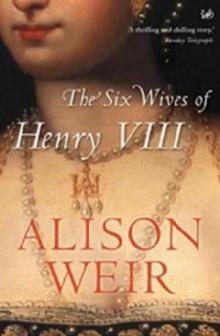 Six Wives of Henry VIII
Six Wives of Henry VIII Elizabeth of York: A Tudor Queen and Her World
Elizabeth of York: A Tudor Queen and Her World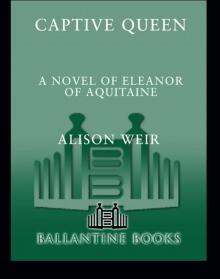 Captive Queen
Captive Queen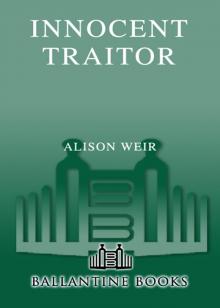 Innocent Traitor
Innocent Traitor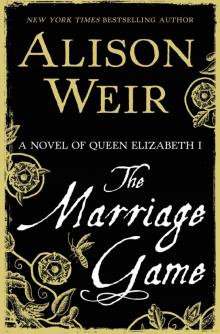 The Marriage Game
The Marriage Game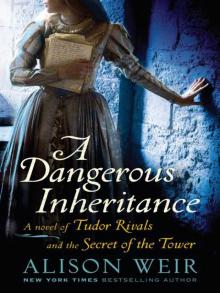 A Dangerous Inheritance
A Dangerous Inheritance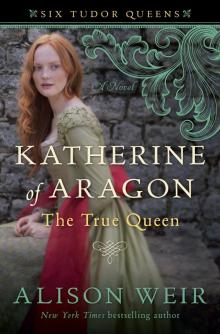 Katherine of Aragón: The True Queen
Katherine of Aragón: The True Queen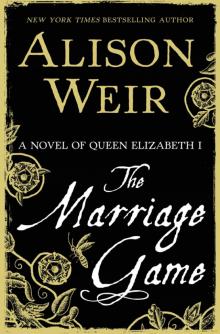 The Marriage Game: A Novel of Queen Elizabeth I
The Marriage Game: A Novel of Queen Elizabeth I Princes in the Tower
Princes in the Tower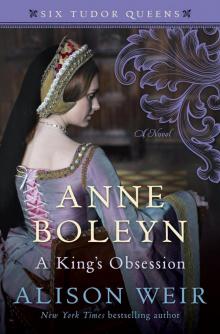 Anne Boleyn: A King's Obsession
Anne Boleyn: A King's Obsession Traitors of the Tower
Traitors of the Tower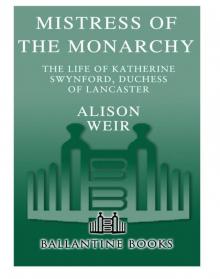 Mistress of the Monarchy: The Life of Katherine Swynford, Duchess of Lancaster
Mistress of the Monarchy: The Life of Katherine Swynford, Duchess of Lancaster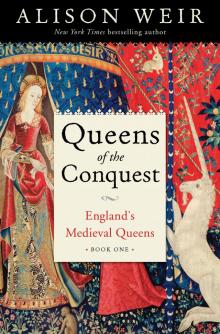 Queens of the Conquest: England’s Medieval Queens
Queens of the Conquest: England’s Medieval Queens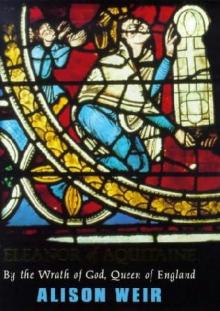 Eleanor of Aquitaine: A Life
Eleanor of Aquitaine: A Life Mary, Queen of Scots, and the Murder of Lord Darnley
Mary, Queen of Scots, and the Murder of Lord Darnley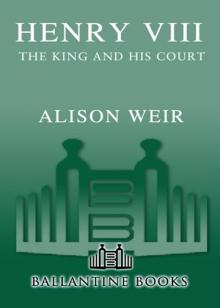 Henry VIII: The King and His Court
Henry VIII: The King and His Court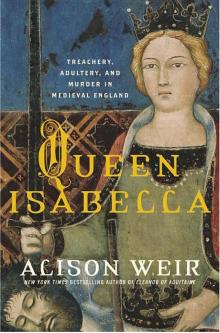 Queen Isabella: Treachery, Adultery, and Murder in Medieval England
Queen Isabella: Treachery, Adultery, and Murder in Medieval England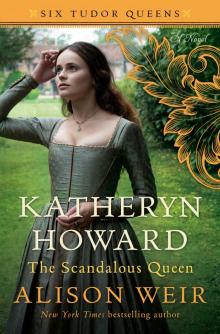 Katheryn Howard, the Scandalous Queen
Katheryn Howard, the Scandalous Queen Arthur- Prince of the Roses
Arthur- Prince of the Roses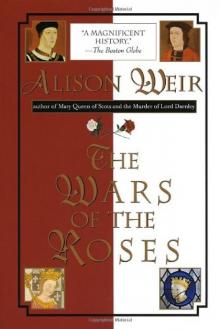 The Wars of the Roses
The Wars of the Roses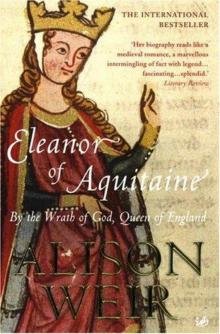 Eleanor of Aquitaine: By the Wrath of God, Queen of England
Eleanor of Aquitaine: By the Wrath of God, Queen of England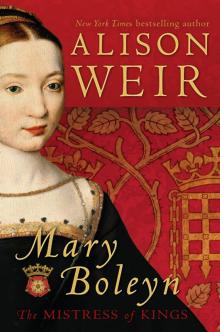 Mary Boleyn: The Great and Infamous Whore
Mary Boleyn: The Great and Infamous Whore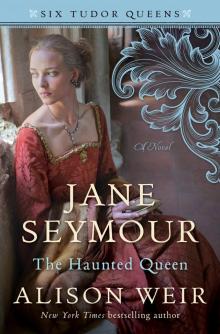 Jane Seymour: The Haunted Queen
Jane Seymour: The Haunted Queen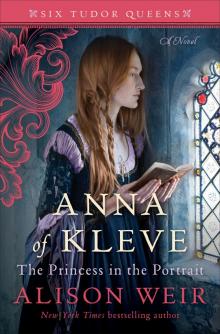 Anna of Kleve, the Princess in the Portrait
Anna of Kleve, the Princess in the Portrait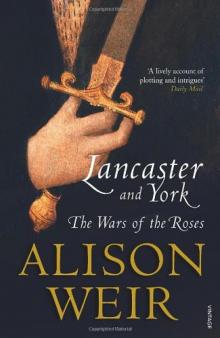 Lancaster and York: The Wars of the Roses
Lancaster and York: The Wars of the Roses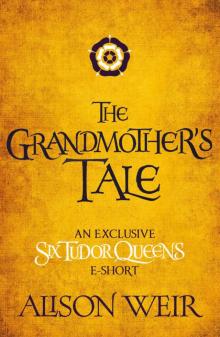 The Grandmother's Tale
The Grandmother's Tale The Princess of Scotland (Six Tudor Queens #5.5)
The Princess of Scotland (Six Tudor Queens #5.5)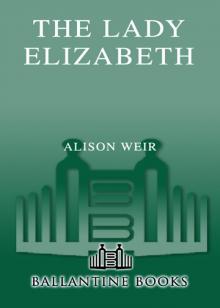 The Lady Elizabeth
The Lady Elizabeth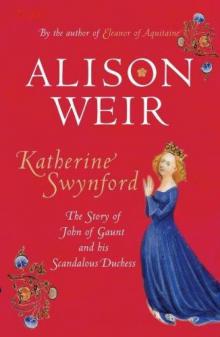 Katherine Swynford: The Story of John of Gaunt and His Scandalous Duchess
Katherine Swynford: The Story of John of Gaunt and His Scandalous Duchess The Curse of the Hungerfords
The Curse of the Hungerfords The Lost Tudor Princess: The Life of Lady Margaret Douglas
The Lost Tudor Princess: The Life of Lady Margaret Douglas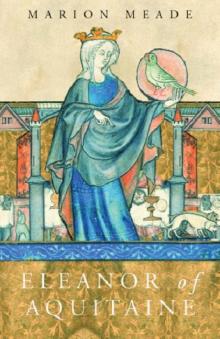 Eleanor of Aquitaine
Eleanor of Aquitaine Mistress of the Monarchy
Mistress of the Monarchy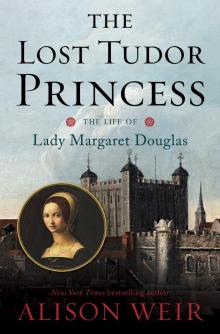 The Lost Tudor Princess
The Lost Tudor Princess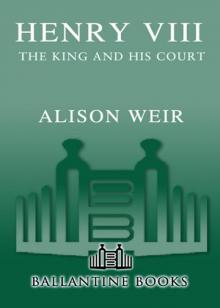 Henry VIII
Henry VIII Anne Boleyn, a King's Obsession
Anne Boleyn, a King's Obsession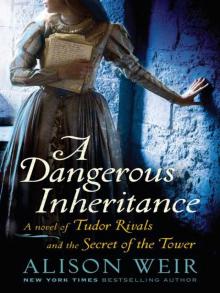 A Dangerous Inheritance: A Novel of Tudor Rivals and the Secret of the Tower
A Dangerous Inheritance: A Novel of Tudor Rivals and the Secret of the Tower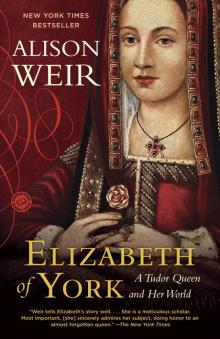 Elizabeth of York
Elizabeth of York Katherine of Aragon, the True Queen
Katherine of Aragon, the True Queen Katherine Swynford
Katherine Swynford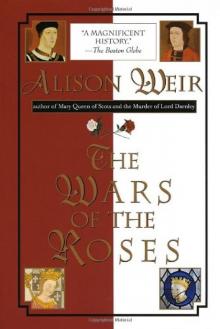 Wars of the Roses
Wars of the Roses Queens of the Conquest
Queens of the Conquest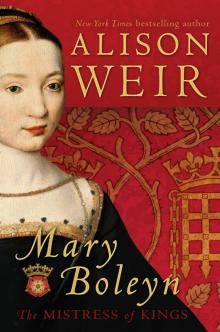 Mary Boleyn
Mary Boleyn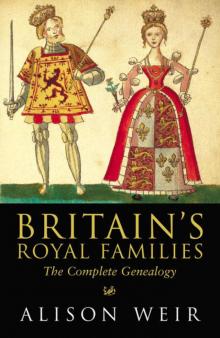 Britain's Royal Families
Britain's Royal Families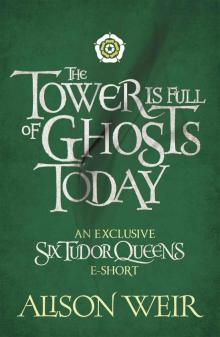 The Tower Is Full of Ghosts Today
The Tower Is Full of Ghosts Today Life of Elizabeth I
Life of Elizabeth I Anne Boleyn A King's Obssession
Anne Boleyn A King's Obssession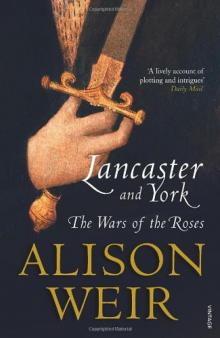 Lancaster and York
Lancaster and York Jane Seymour, the Haunted Queen
Jane Seymour, the Haunted Queen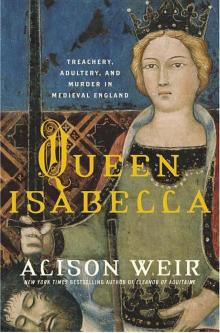 Queen Isabella
Queen Isabella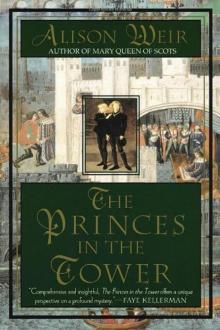 The princes in the tower
The princes in the tower